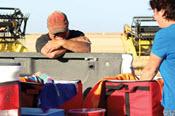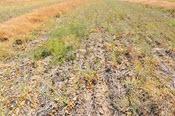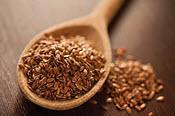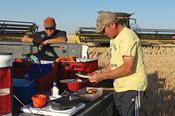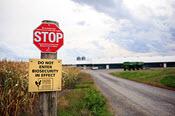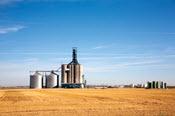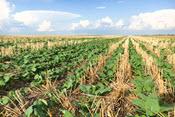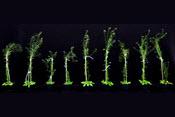Better Farming publishes nine editions of its Prairies magazine each year. After publishing each edition, we share a feature article online. Each Better Farming Prairies magazine includes much more content – you won’t want to miss it. If you don’t receive the print edition of Better Farming Prairies, but you enjoy reading the articles below, be sure to subscribe to the magazine!
You may be overworked, and you could use more sleep and better rest
By Stacy Berry
Many farmers define fatigue as simply being very tired. That definition isn’t wrong – but it is incomplete.
A part of fatigue is exhaustion from lack sleep, but Jody Wacowich, executive director of AgSafe Alberta, reminds us that fatigue can “also be that you are overworked.”
Why care about being tired or overworked? Chronic fatigue has a plethora of physical health risks – obesity, cancer, stroke, and cardiovascular issues to name a few.
Do pre- or post-harvest strategies work best?
By Colleen Halpenny
Growers of all crop types are constantly looking for the best ways to manage weeds in their fields. With emergences of more herbicide resistance and new weed species, producers are adjusting their crop systems to set up the next season for success.
Benefits of this ‘old friend’ do seem to outweigh the challenges for many
By Stacy Berry
Although flax has been used in agriculture for over 10,000 years, it is a relatively novel crop to many farmers throughout the Prairies.
Finding balance in the farm family budget
By Colleen Halpenny
Whether you call it moonlighting, a side gig, or bonafide employment, many producers are known for more than their farm. They take on extra work to make ends meet, working off-farm while the farming operations are run by other family members.
Regardless of lifestyle or job sector, feeling the pinch of increasing living costs, how are farmers making ends meet? We spoke with those in the industry to find out why, and how, they are turning to outside income to support their needs.
The number of farms has decreased only slightly across Canada
By Becky Dumais
Farms come in all sizes and varieties, but are family-owned and operated farms disappearing?
Producers have mixed opinions on the subject. Reasons for believing that family farms are threatened or declining include barriers to accessing land, finances – or not having a succession plan.
How Producers Across Livestock Sectors are Keeping their Operations Healthy
By Colleen Halpenny
As outlined by the Canadian Food Inspection Agency (CFIA), biosecurity is a description for a set of measures designed to protect Canada’s animal and plant resources – whether these be from foreign or established infectious and parasitic disease agents at the national, regional and farm levels.
While wheat prices may be higher, Prairie producers have other concerns this growing season.
by Becky Dumais
Wheat prices are reportedly their highest in 14 years, and they could get higher – but other issues are keeping producers up at night: input costs, the impending carbon tax, and last year’s drought.
Experts discuss innovative techniques for a successful yield.
by Kristen Lutz
Coming out of the drought of 2021, western Canadian producers are very aware of the effects Mother Nature can and will have on their yields, especially in sensitive crops like canola.
The 2022 growing season offers new opportunities to producers with high commodity prices, and in many areas, increased soil moisture from snowmelt.
USask to begin research into new strategies for crop protection.
by Colleen Halpenny
“As markets continue to be volatile, and with ever-changing growing conditions – and consumers looking to have a stable food supply – we must find new ways to bolster plants to thrive.
“What can have the largest potential positive impact?”
This is what Dr. Karen Tanino says that she and colleague, Dr. Tawhidur Rahman, hope to find out through new funding for their research on crop protection.
The Top 5 undesirable insects that are coming for your crops this year.
by Becky Dumais
Every year producers deal with pests creeping onto the farm – those unwanted guests that infiltrate the field, eat their way through crops and hamper yields and productivity.
Five invertebrate pests we are expecting to invade Prairie fields this season are: grasshoppers, flea beetles, lygus bugs, cutworm, and wheat stem sawfly.
With this list of potential suspects in mind, how can producers prepare for these crop-crippling creatures?



